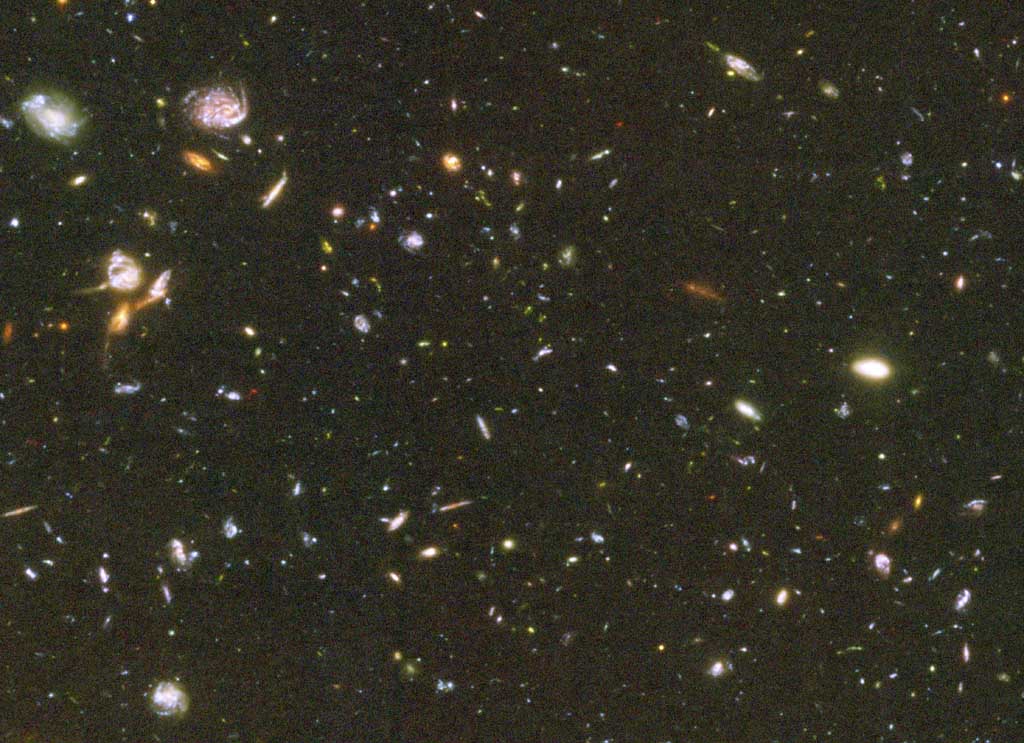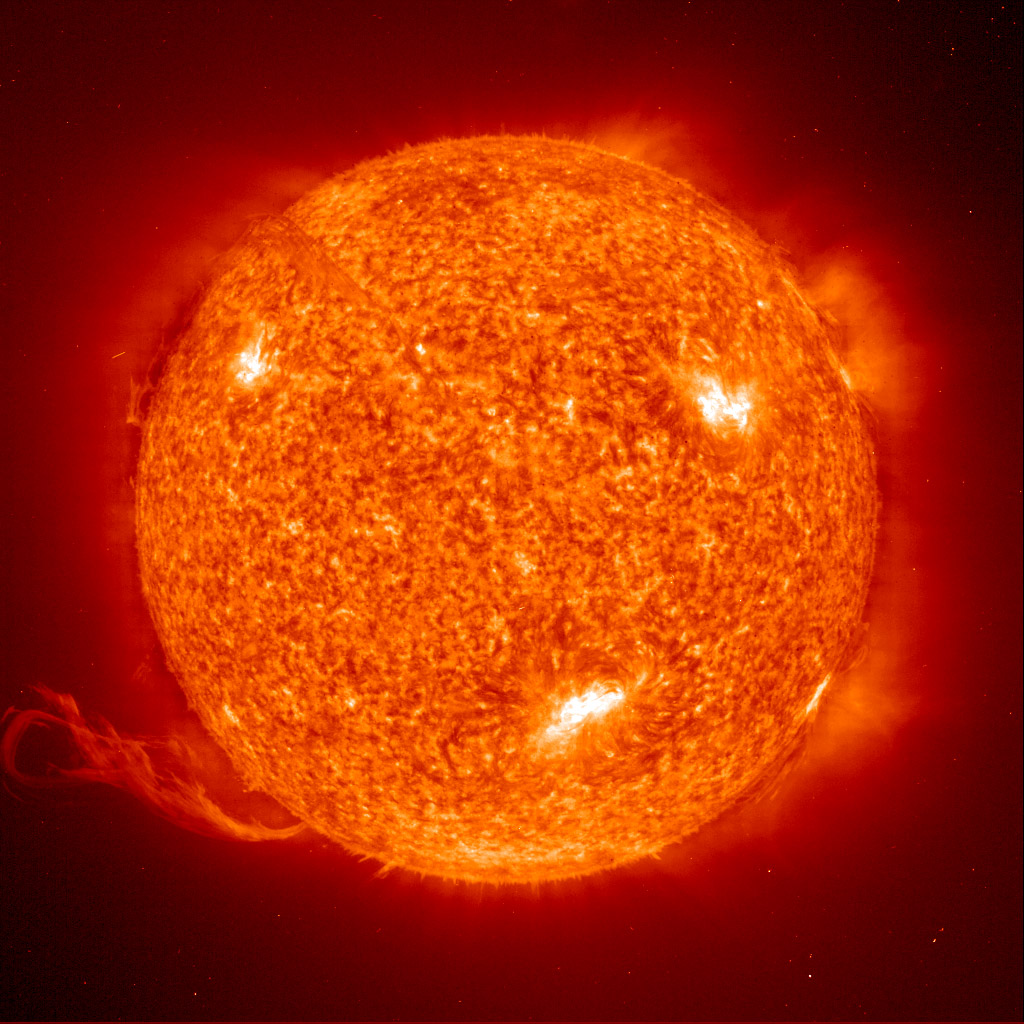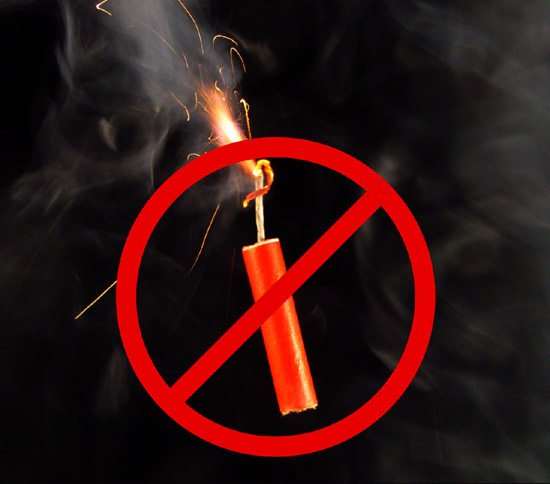The
Astrophysics of the Non-Exploding Universe
Some pictures . . . To the main page of this site: astroneu.com
Below is a section of the Hubble Ultra Deep Field image, showing many
different galaxies. This is a false colour image made from
observations at multiple wavelengths - from the near ultra-violet into
the infra-red, and processed to give a colour image. I have
altered the gamma to bring out more lower brightness detail on CRT
monitors. More information is available from http://hubblesite.org/newscenter/newsdesk/archive/releases/2004/07/
and http://www.stsci.edu/hst/udf
.
Below that is an image of the Sun, taken by the spacecraft SOHO http://sohowww.nascom.nasa.gov
, which is in orbit around the Sun a little closer than
Earth,
following Earth. This one (see description at http://sohowww.nascom.nasa.gov/gallery/EIT/eit027.html)
was taken using the light emitted by singly ionized helium (304
Angstrom) which occurs when plasma is at around 60,000 to 80,000
K. A large prominence is seen erupting at the lower left, with
another prominence seen at the upper left against the disk.
Prominences have much lower temperatures and higher densities than the
surrounding corona, which is typically 10 to 20 times hotter, at 1 to 2
Mega K. Spicules (or are they macrospicules?) can clearly
be seen at the limb in the north and south - the areas of the polar
coronal holes. (Copyright: SOHO (ESA & NASA) http://sohowww.nascom.nasa.gov/gallery/cr.html
.)


To the main page of this site: astroneu.com


